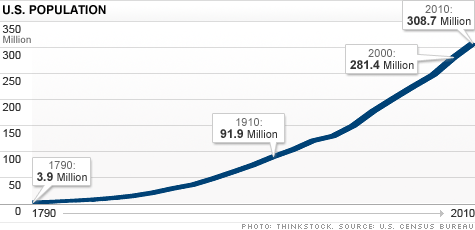
World population has reached 8 billion people on Novemaccording to the United Nations. World population is expected to reach 9 billion in the year 2037. The United Nations projects world population to reach 10 billion in the year 2058. Wonder how big was the world's population when you were born?Ĭheck out this simple wizard or this more elaborated one to find out. Because of declining growth rates, it will now take over 200 years to double again.In 1970, there were roughly half as many people in the world as there are now.During the 20th century alone, the population in the world has grown from 1.65 billion to 6 billion.it grew to 200 million (some estimate 300 million or even 600, suggesting how imprecise population estimates of early historical periods can be), with a growth rate of under 0.05% per year.Ī tremendous change occurred with the industrial revolution: whereas it had taken all of human history until around 1800 for world population to reach one billion, the second billion was achieved in only 130 years (1930), the third billion in 30 years (1960), the fourth billion in 15 years (1974), and the fifth billion in only 13 years (1987).
#1.7 MILLION PEOPLE LIVE FULL#
View the full tabulated data.Īt the dawn of agriculture, about 8000 B.C., the population of the world was approximately 5 million. 1.3 million people (2.1%) belonged to other ethnic groups – 0.9 million of those identified with the ‘any other’ ethnic group (1.6%), and 0.3 million with the Arab ethnic group (0.The chart above illustrates how world population has changed throughout history.1.7 million people (2.9%) had mixed ethnicity – 0.5 million of those identified with the mixed white and black Caribbean ethnic group (0.9%), and 0.5 million with the mixed white and Asian ethnic group (0.8%).2.4 million people (4.0%) were from black ethnic groups – 1.5 million of those identified with the black African ethnic group (2.5%), and 0.6 million with the black Caribbean ethnic group (1.0%).5.5 million people (9.3%) were from Asian ethnic groups – 1.9 million of those identified with the Indian ethnic group (3.1%), and 1.6 million with the Pakistani ethnic group (2.7%).48.7 million people (81.7%) were from white ethnic groups – 44.4 million of those identified with the white British group (74.4% of the population) and 3.7 million with the white 'other' ethnic group (6.2%).the total population of England and Wales was 59.6 million.You can find confidence intervals for the data in the interactive tools showing the quality and quality assurance. Read the detailed methodology document for this data. There were 2 changes in 2021 – the ‘Roma’ group was added under the ‘white’ ethnic group, and people could write their own response under the ‘black African’ ethnic group.Īs a result, figures for the white other and black African and black other ethnic groups may not be directly comparable for 20, although the groups concerned account for very low percentages of the overall population. The ethnic groups used in the 2021 Census were slightly different from the 2011 Census ethnic groups. This data uses the standardised list of 19 ethnic groups that were developed for the 2021 Census. The data has been adjusted to take into account people and households who were not counted or counted incorrectly. The data does not include households that did not answer the question about ethnicity. Percentages are rounded to 1 decimal place.

It also includes communal establishments, such as care homes and university halls of residence.

This data measures the size of the population of England and Wales, and the number and percentage of people from each ethnic group.Ĭensus data includes people in around 25 million private households.

Things you need to know What the data measures


 0 kommentar(er)
0 kommentar(er)
